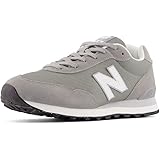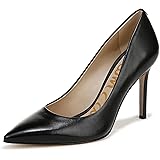It often feels like a new streetwear brand emerges every single day, flooding the market with fresh designs and ambitious visions. However, despite this booming creativity and apparent ease of entry, a disheartening number of these ventures unfortunately fail to achieve lasting success. This perplexing outcome frequently stems from a crucial oversight: many aspiring creators simply do not grasp the foundational history of streetwear.
As the accompanying video insightfully highlights, understanding the evolution of streetwear is akin to possessing a detailed roadmap for your own brand’s journey. Delving into the past reveals invaluable lessons and forgotten innovations that can empower designers to forge a more resilient and authentic path forward. Knowing the history of streetwear allows you to build not just a brand, but a legacy, by recognizing the shoulders upon which today’s giants stand.
The Genesis of Streetwear: A Symphony of Hip-Hop and Individuality
To truly appreciate the rich tapestry of streetwear, we must journey back to the vibrant landscape of 1970s New York City, where hip-hop music first began to pulse through the streets. During this foundational era, there were no dedicated clothing lines catering to the burgeoning urban market, compelling early artists to fashion their unique looks from an eclectic mix of available styles. These pioneers, like the legendary Afrika Bambaataa, were not constrained by predefined fashion norms; instead, they boldly experimented with everything from cowboy boots and leather pants to fringed suede jackets, cultivating an aesthetic that was purely their own.
The early 1980s heralded the “Golden Age of Hip-Hop,” seeing groups like Salt-N-Pepa and Public Enemy rise to prominence, each with distinct visual identities. As these artists gained financial success, their desire for personalized expression grew, leading them to seek out custom-made garments rather than off-the-rack luxury brands. This demand gave birth to cultural icons such as Dapper Dan, whose Harlem atelier became renowned for crafting bespoke outfits adorned with unmistakable logos from high-end fashion houses, tailored specifically for the hip-hop elite. His ingenious creations not only defined an era but also demonstrated the immense power of custom design and brand appropriation in shaping personal style, solidifying a critical chapter in streetwear history.
The 90s Explosion: Urban Wear Takes Center Stage
As hip-hop’s influence continued to surge into the 1990s, a significant void in the fashion market became undeniably clear: a need for brands that authentically represented the urban aesthetic. This critical gap led to the emergence of the first wave of “urban wear” labels, spearheaded by visionary Black designers who instinctively understood the desires of their community and the rising hip-hop stars. Brands like Cross Colours, with its vibrant, positive message, and FUBU (For Us By Us), which became a global phenomenon, proudly championed this new movement, creating clothing that resonated deeply with a generation.
Other influential brands like Maurice Malone, Karl Kani, Mecca, and Avirex quickly followed suit, each contributing to a burgeoning industry that celebrated urban culture. This period saw a shift from artists simply customizing existing items to an entire ecosystem of designers creating clothing specifically for them. These early urban wear brands, including later entrants like Ecko and PNB Nation, laid indispensable groundwork, proving that fashion could be both commercially successful and deeply rooted in cultural identity. They transformed the way urban style was perceived, establishing a powerful new category in the broader fashion landscape.
From Coasts to Cultures: The West Coast & Skate Influence
The late 1990s and early 2000s marked a pivotal shift, as hip-hop’s cultural ripple effects extended far beyond the East Coast, reaching new audiences, particularly within the West Coast skate and surf scenes. While earlier skaters often gravitated towards punk and rock influences in their music and attire, the undeniable dominance of hip-hop began to reshape their aesthetic preferences. This cultural fusion resulted in skateboarders adopting elements of urban wear, embracing baggier pants and graphic T-shirts that diverged sharply from their previous surf-oriented or punk-inspired looks.
This period witnessed the birth of brands such as LRG (Lifted Research Group) and The Hundreds, which skillfully blended the vibrant energy of urban fashion with the relaxed, functional appeal of skate culture. Icons like Chad Muska, a skateboarding legend deeply influenced by hip-hop, exemplified this evolving style, further blurring the lines between these distinct subcultures. The convergence of these powerful forces, amplified by events like the X Games, created a fertile ground where “streetwear” as we recognize it today, began to truly take shape, essentially becoming a dynamic mashup of urban and skate sensibilities.
The Birth of Modern Streetwear and Its Dynamic Evolution
The mid-2000s marked a significant transition; the urban wear market, once dominant, began to recede, making way for the full ascendance of what we now call streetwear. Brands like Akademiks and Ecko, which had defined the previous decade, saw their prominence wane as labels like LRG, The Hundreds, and Crooks & Castles surged in popularity. This transition was not merely a change in brand leadership but a fundamental shift in aesthetic and market focus.
Simultaneously, a dramatic change in silhouette occurred, moving from the once-ubiquitous baggy styles to a preference for slimmer fits. This trend was notably pioneered by brands like Krew, a denim company whose sponsored skaters, embracing a more streamlined look, popularized skinny jeans. This critical shift also coincided with major changes in the fashion industry’s infrastructure. The long-standing ASR trade show, traditionally focused on surf and skate, was eventually overshadowed by Agenda, a new platform that more effectively catered to the burgeoning streetwear and contemporary lifestyle market, providing countless brands with a launchpad for success. The widespread adoption of social media platforms like Instagram and Twitter in the late 2000s further amplified streetwear’s global reach, especially intertwining it with the rapidly expanding sneaker culture, making color-coordinated lines a common design approach.
Looking Ahead: The Rise of Street Lux and Beyond
As streetwear has continued its relentless evolution into the 2010s and beyond, we are now witnessing another fascinating transformation: the emergence of “street lux” or luxury streetwear. This contemporary movement elevates traditional streetwear elements with high-end materials, sophisticated tailoring, and premium pricing, blurring the lines between casual urban style and high fashion. Iconic brands are collaborating with luxury houses, and established designers are incorporating streetwear aesthetics into their collections, marking a new chapter in this ever-changing narrative.
This ongoing evolution demonstrates that streetwear is not a static category but a living, breathing cultural phenomenon, constantly adapting to new influences and consumer demands. Its trajectory, from hip-hop’s humble beginnings to today’s global luxury collaborations, exemplifies fashion’s dynamic interplay with music, art, and societal shifts. Observing its path provides a compelling forecast of future trends, hinting at the next exciting iterations of street fashion yet to come.
Why Understanding Streetwear History is Your Brand’s Blueprint
For anyone serious about launching or growing a successful clothing line, particularly within this vibrant niche, grasping the complete streetwear history is absolutely non-negotiable. It serves as an invaluable roadmap, offering profound insights into the foundational principles, creative adaptations, and strategic pivots that have defined the industry’s most impactful brands. By studying the journeys of past pioneers—from Dapper Dan’s ingenuity to the cultural resonance of FUBU and the innovative blend of LRG—you can discern patterns of success and identify pitfalls to avoid.
This historical knowledge empowers you to formulate a more robust brand identity, rooted in authenticity and informed by proven strategies, rather than simply replicating fleeting trends. Successful brands, past and present, did not achieve their status overnight through pure luck; they often had founders or key team members who possessed a deep understanding of fashion, whether through formal education, internships, or extensive industry experience. Learning the evolution of streetwear is not just about appreciating the past; it’s about equipping your brand with the wisdom needed to navigate the future and carve out a lasting legacy.











